Top speed 3,560 km/h Retired 1968 First flight April 26, 1962 | Introduced 1967 Range 4,000 km | |
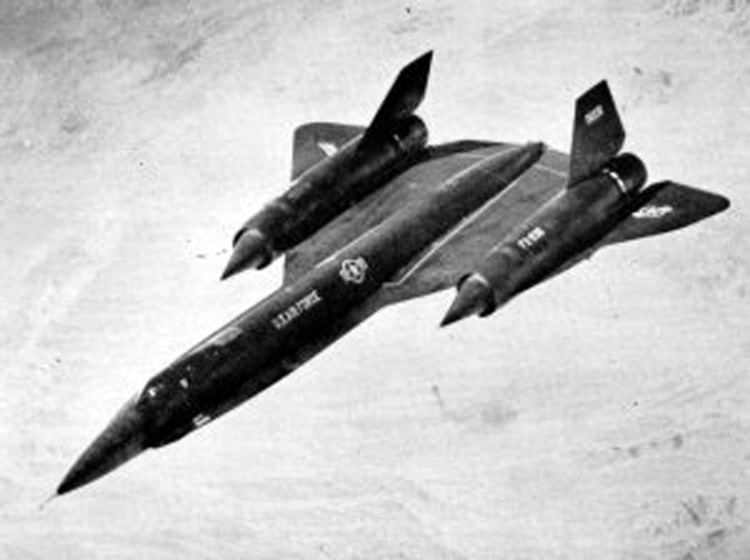 | ||
Engine types Turbojet, Pratt & Whitney J58 | ||
Bd 0012 frank murray oral interview lockheed a 12 4 29 14
The Lockheed A-12 was a reconnaissance aircraft built for the United States Central Intelligence Agency (CIA) by Lockheed's Skunk Works, based on the designs of Clarence "Kelly" Johnson. The aircraft was designated A-12, the 12th in a series of internal design efforts for "Archangel", the aircraft's internal code name. It competed in the CIA's "Oxcart" program against the Convair Kingfish proposal in 1959, and won for a variety of reasons.
Contents
- Bd 0012 frank murray oral interview lockheed a 12 4 29 14
- Design and development
- New materials and production techniques
- Flight testing
- Operational history
- Mission profile
- SAM evasion over North Vietnam
- Final missions over North Korea
- Retirement
- Timeline
- Training variant
- YF 12A
- M 21
- Accidents and incidents
- Aircraft on display
- Specifications A 12
- References
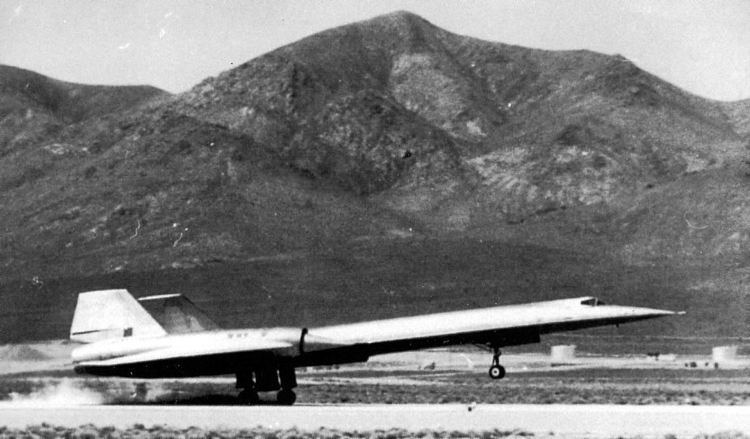
CIA's representatives initially favored Convair's design for its smaller radar cross-section, but the A-12's specifications were slightly better and its projected cost was much less. The companies' respective track records proved decisive. Convair's work on the B-58 had been plagued with delays and cost overruns, whereas Lockheed had produced the U-2 on time and under budget. In addition, it had experience running a “black” project.
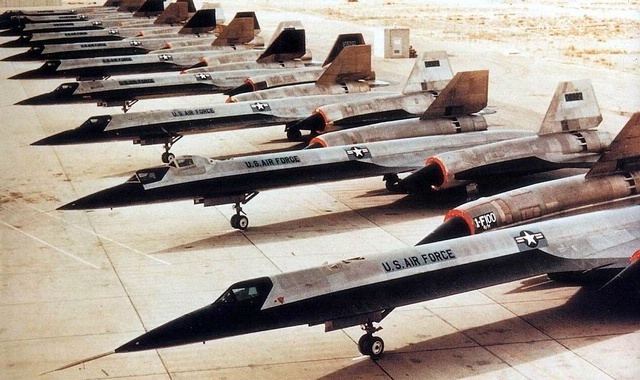
The A-12 was produced from 1962 to 1964, and operated from 1963 to 1968. It was the precursor to the twin-seat U.S. Air Force YF-12 prototype interceptor, M-21 drone launcher, and the SR-71 Blackbird, a slightly longer variation able to carry a heavier fuel and camera load. The A-12's final mission was flown in May 1968, and the program and aircraft retired in June. The program was officially revealed in the mid-1990s.
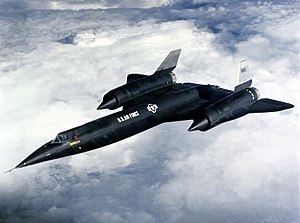
A CIA officer later wrote, "OXCART was selected from a random list of codenames to designate this R&D and all later work on the A-12. The aircraft itself came to be called that as well." The crews named the A-12 the Cygnus, suggested by pilot Jack Weeks to follow the Lockheed practice of naming aircraft after celestial bodies.

Design and development
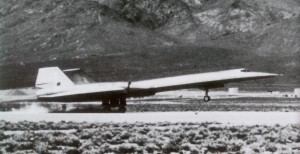
With the failure of the CIA's Project Rainbow to reduce the radar cross-section (RCS) of the U-2, preliminary work began inside Lockheed in late 1957 to develop a follow-on aircraft to overfly the Soviet Union. Under Project Gusto the designs were nicknamed "Archangel", after the U-2 program, which had been known as "Angel". As the aircraft designs evolved and configuration changes occurred, the internal Lockheed designation changed from Archangel-1 to Archangel-2, and so on. These names for the evolving designs soon simply became known as "A-1", "A-2", etc. The CIA program to develop the follow-on aircraft to the U-2 was code-named Oxcart.
These designs had reached the A-11 stage when the program was reviewed. The A-11 was competing against a Convair proposal called Kingfish, of roughly similar performance. However, the Kingfish included a number of features that greatly reduced its radar cross-section, which was seen as favorable to the board. Lockheed responded with a simple update of the A-11, adding twin canted fins instead of a single right-angle one, and adding a number of areas of non-metallic materials. This became the A-12 design. On 26 January 1960, the CIA ordered 12 A-12 aircraft.
New materials and production techniques
Because the A-12 was way ahead of its time, many new technologies had to be invented specifically for the Oxcart project, some still in use today. One of the biggest problems that engineers faced at that time was working with titanium.
In his book Skunk Works: A Personal Memoir of My Years at Lockheed, Ben Rich stated, "Our supplier, Titanium Metals Corporation, had only limited reserves of the precious alloy, so the CIA conducted a worldwide search and using third parties and dummy companies, managed to unobtrusively purchase the base metal from one of the world's leading exporters – the Soviet Union. The Russians never had an inkling of how they were actually contributing to the creation of the airplane being rushed into construction to spy on their homeland."
Before the A-12, titanium was used only in high-temperature exhaust fairings and other small parts directly related to supporting, cooling, or shaping high-temperature areas on aircraft like those subject to the greatest kinetic heating from the airstream, such as wing leading edges. The A-12, however, was constructed mainly of titanium and some composite materials made from iron ferrite and silicon laminate, both combined with asbestos to absorb radar returns and make the aircraft more stealthy.
Flight testing
After development and production at the Skunk Works, in Burbank, California, the first A-12 was transferred to Groom Lake test facility. On 25 April 1962 it was taken on its first (unofficial and unannounced) flight with Lockheed test pilot Louis Schalk at the controls. The first official flight later took place on 30 April and subsequent supersonic flight on 4 May 1962, reaching speeds of Mach 1.1 at 40,000 ft (12,000 m).
The first five A-12s, in 1962, were initially flown with Pratt & Whitney J75 engines capable of 17,000 lbf (76 kN) thrust each, enabling the J75-equipped A-12s to obtain speeds of approximately Mach 2.0. On 5 October 1962, with the newly developed J58 engines, an A-12 flew with one J75 engine, and one J58 engine. By early 1963, the A-12 was flying with J58 engines, and during 1963 these J58-equipped A-12s obtained speeds of Mach 3.2. Also, in 1963, the program experienced its first loss when, on 24 May, "Article 123" piloted by Kenneth S. Collins crashed near Wendover, Utah.
The reaction to the crash illustrated the secrecy and importance of the project. The CIA called the aircraft a Republic F-105 Thunderchief as a cover story; local law enforcement and a passing family were warned with "dire consequences" to keep quiet about the crash. Each was also paid $25,000 in cash to do so; the project often used such cash payments to avoid outside inquiries into its operations. The project received ample funding; contracted security guards were paid $1,000 monthly with free housing on base, and chefs from Las Vegas were available 24 hours a day for steak, Maine lobster, or other requests.
In June 1964, the last A-12 was delivered to Groom Lake, from where the fleet made a total of 2,850 test flights. A total of 18 aircraft were built through the program's production run. Of these, 13 were A-12s, three were prototype YF-12A interceptors for the U.S. Air Force (not funded under the OXCART program), and two were M-21 reconnaissance drone carriers. One of the 13 A-12s was a dedicated trainer aircraft with a second seat, located behind the pilot and raised to permit the Instructor Pilot to see forward. The A-12 trainer, known as "Titanium Goose", retained the J75 power plants for its entire service life.
Three more A-12s were lost in later testing. On 9 July 1964, "Article 133" crashed while making its final approach to the runway when a pitch-control servo device froze at an altitude of 500 feet (150 metres) and airspeed of 200 knots (370 kilometres per hour) causing it to begin a smooth steady roll to the left. Lockheed test pilot Bill Parks could not overcome the roll. At about a 45 degree bank angle and 200 feet (61 metres) altitude he ejected and was blown sideways out of the aircraft. Although he was not very high off the ground, his parachute did open and he landed safely.
On the 28 December 1965, the third A-12 was lost when "Article 126" crashed 30 seconds after takeoff when a series of violent yawing and pitching actions was followed very rapidly with the aircraft becoming uncontrollable. Mele Vojvodich was scheduled to take aircraft number 126 on a performance check flight which included a rendezvous beacon test with a KC-135 tanker and managed to eject safely 150 feet (46 metres) to 200 feet (61 metres) above the ground. A post-crash investigation revealed that the primary cause of the accident was a maintenance error in that the flight line technician was negligent in performing his duty when he connected the wiring harnesses for the yaw and pitch rate gyroscopes of the stability augmentation system in reverse. It was also found that a contributing cause was a design deficiency which made it possible to physically connect the wiring harnesses in reverse.
The first fatality of the Oxcart program occurred on 5 January 1967, when "Article 125" crashed, killing CIA pilot Walter Ray when the aircraft ran out of fuel while on its descent to the test site. No precise cause could be established for the loss and it was considered most probable that a fuel gauging error led to fuel starvation and engine flameout 67 miles (108 kilometres) from the base. Ray ejected successfully but was unable to separate from the seat and was killed on impact.
Operational history
Although originally designed to succeed the U-2 in overflights over the Soviet Union and Cuba, the A-12 was never used for either role. After a U-2 was shot down in May 1960, the Soviet Union was considered too dangerous to overfly except in an emergency (and overflights were no longer necessary, thanks to reconnaissance satellites) and, although crews trained for flights over Cuba, U-2s continued to be adequate there.
The Director of the CIA decided to deploy some A-12s to Asia. The first A-12 arrived at Kadena Air Base on Okinawa on 22 May 1967. With the arrival of two more aircraft on 24 May, and 27 May this unit was declared to be operational on 30 May, and it began Operation Black Shield on 31 May. Mel Vojvodich flew the first Black Shield operation, over North Vietnam, photographing surface-to-air missile (SAM) sites, flying at 80,000 ft (24,000 m), and at about Mach 3.1. During 1967 from the Kadena Air Base, the A-12s carried out 22 sorties in support of the War in Vietnam. Then in 1968, Black Shield conducted operations in Vietnam and it also carried out sorties during the Pueblo Crisis with North Korea.
Mission profile
Operations and maintenance at Kadena began with the receipt of alert notification. Both a primary aircraft and pilot and a back-up aircraft and pilot were selected. The aircraft were given thorough inspection and servicing, all systems were checked, and the cameras equipped. Pilots received a detailed route briefing in the early evening prior to the day of flight. On the morning of the flight a final briefing occurred, at which time the condition of the aircraft and its systems was reported, last-minute weather forecasts reviewed, and other relevant intelligence communicated, together with any amendments or changes in the flight plan. Two hours prior to take-off the primary pilot had a medical examination, got into his suit, and was taken to the aircraft. If any malfunctions developed on the primary aircraft, the back-up could execute the mission one hour later.
A typical route profile for a mission over North Vietnam included a refueling shortly after take-off, south of Okinawa, the planned photographic pass or passes, withdrawal to a second aerial refueling in the Thailand area, and return to Kadena. Its turning radius of 86 miles (138 kilometres) was such, however, that on some mission profiles it might be forced during its turn to intrude into Chinese airspace.
Once landed, the camera film was removed from the aircraft, boxed, and sent by special plane to the processing facilities. Film from earlier missions was developed at the Eastman Kodak plant in Rochester, New York. Later an Air Force Center in Japan carried out the processing in order to place the photointelligence in the hands of American commanders in Vietnam within 24 hours of completion of a mission.
SAM evasion over North Vietnam
There were a number of reasons leading to the retirement of the A-12, but one major concern was the growing sophistication of Soviet-supplied SAM sites that it had to contend with over mission routes. In 1967, the vehicle was tracked with acquisition radar over North Vietnam, but the SAM site was unsuccessful with the Fan Song guidance radar used to home the missile to the target. On 28 October a North Vietnamese SAM site launched a single, albeit unsuccessful, missile. Photography from this mission documented the event with photographs of missile smoke above the SAM firing site, and with pictures of the missile and of its contrail. Electronic countermeasures equipment appeared to perform well against the missile firing.
During a flight on 30 October 1967, pilot Dennis Sullivan detected radar tracking on his first pass over North Vietnam. Two sites prepared to launch missiles but neither did. During the second pass, at least six missiles were fired, each confirmed by missile vapor trails on mission photography. Looking through his rear-view periscope, Sullivan saw six missile vapor trails climb to about 90,000 ft (27,000 m) before converging on his aircraft. He noted the approach of four missiles, and although they all detonated behind him, one came within 100 yards (91 metres) to 200 yards (180 metres) of his aircraft. Post-flight inspection revealed that a piece of metal had penetrated the lower right wing fillet area and lodged against the support structure of the wing tank. The fragment was not a warhead pellet but may have been a part of the debris from one of the missile detonations observed by the pilot.
The SA-2 'Guideline' was an early missile design intended to counter lower and slower aircraft like the B-52 and B-58. In response to faster, higher-flying designs like the B-70, the Soviets had begun development of greatly improved missile systems, notably the SA-5 'Gammon'. The Soviet Air Defence Forces (Protivo-Vozdushnaya Oborona, PVO) cleared the SA-5 for service in 1967; if deployed to Vietnam, it would have provided an additional risk to the A-12.
The final Black Shield mission over North Vietnam and the Demilitarized Zone (DMZ) was flown on the 8 March 1968. Good quality photography was obtained of Khe Sanh and the Laos, Cambodia, and South Vietnamese border areas. No usable photography was obtained of North Vietnam due to adverse weather conditions. There was no indication of a hostile weapons reaction and no ECM systems were activated.
Final missions over North Korea
In 1968 three missions were flown over North Korea. The first mission occurred during a very tense period following seizure of the Navy intelligence ship Pueblo on the 23rd of January. The aim was to discover whether the North Koreans were preparing any large scale hostile move following this incident and to actually find where the Pueblo was hidden. The ship was found anchored in an inlet in Wonsan Bay attended by two North Korean patrol boats and guarded by three Komars. Chinese tracking of the flight was apparent, but no missiles were fired at the Oxcart.
The second mission on the 19 February 1968 was also the first two-pass mission over North Korea. The Oxcart vehicle photographed 84 primary targets plus 89 bonus targets. Scattered clouds covered 20 percent of the area, concealing the area in which the USS Pueblo was photographed on the previous mission. One new SA-2 site was identified near Wonsan.
Retirement
Even before the A-12 became operational, its intended purpose — replacing the U-2 in overflights of the Soviet Union — had become less likely. Soviet air defenses had advanced to the point that even an aircraft flying faster than a rifle bullet at the edge of space could be tracked. Upgrades to Soviet radar systems increased their blip-to-scan ratios, rendering the A-12 vulnerable. In any event, President Kennedy had stated publicly that the United States would not resume such missions. By 1965, moreover, the photoreconnaissance satellite programs had progressed to the point that manned flights over the Soviet Union were unnecessary to collect strategic intelligence.
The A-12 program was ended on 28 December 1966 — even before Black Shield began in 1967 — due to budget concerns and because of the SR-71, which began to arrive at Kadena in March 1968. The twin-seat SR-71 was heavier and flew slightly lower and slower than the A-12.
Ronald L. Layton flew the 29th and final A-12 mission on 8 May 1968, over North Korea. On 4 June 1968, just 2½ weeks before the fleet's retirement, an A-12 from Kadena, piloted by Jack Weeks, was lost over the Pacific Ocean near the Philippines while conducting a functional check flight after the replacement of one of its engines. Frank Murray made the final A-12 flight on 21 June 1968, to Palmdale, California, storage facility.
On 26 June 1968, Vice Admiral Rufus L. Taylor, the Deputy Director of Central Intelligence, presented the CIA Intelligence Star for valor to Weeks' widow and pilots Collins, Layton, Murray, Vojvodich, and Dennis B. Sullivan for participation in Black Shield.
The deployed A-12s and the eight non-deployed aircraft were placed in storage at Palmdale. All surviving aircraft remained there for nearly 20 years before being sent to museums around the U.S. On 20 January 2007, despite protests by Minnesota's legislature and volunteers who had maintained it in display condition, the A-12 preserved in Minneapolis, Minnesota, was sent to CIA headquarters to be displayed there.
Timeline
Major events in the development and operation of the A-12 and its successor, the SR-71, include:
See SR-71 timeline for later SR-71 events.
Training variant
The A-12 training variant (60-6927 "Titanium Goose") was a two-seat model with two cockpits in tandem with the rear cockpit raised and slightly offset. In case of emergency, the trainer was designed to allow the flight instructor to take control.
YF-12A
The YF-12 program was a limited production variant of the A-12. Lockheed convinced the U.S. Air Force that an aircraft based on the A-12 would provide a less costly alternative to the recently canceled North American Aviation XF-108, since much of the design and development work on the YF-12 had already been done and paid for. Thus, in 1960 the Air Force agreed to take the seventh to ninth slots on the A-12 production line and have them completed in the YF-12A interceptor configuration.
M-21
The M-21, a two-seat variant, carried and launched the Lockheed D-21, an unmanned, faster and higher-flying reconnaissance drone. The M-21 had a pylon on its back for mounting the drone and a second cockpit for a Launch Control Operator/Officer (LCO) in the place of the A-12's Q bay. The D-21 was autonomous; after launch, it would fly over the target, travel to a predetermined rendezvous point, eject its data package, and self-destruct. A C-130 Hercules would catch the package in midair.
The M-21 program was canceled in 1966 after a drone collided with the mother ship at launch. The crew safely ejected, but LCO Ray Torick drowned when he landed in the ocean and his flight suit filled with water.
The D-21 lived on in the form of a B-model launched from a pylon under the wing of the B-52 bomber. The D-21B performed operational missions over China from 1969 to 1971.
Accidents and incidents
Six of the 15 A-12s were lost in accidents, with the loss of two pilots and an engineer:
Aircraft on display
All nine surviving aircraft are on display in the U.S.:
Media related to Lockheed A-12 museum aircraft at Wikimedia Commons
Specifications (A-12)
Data from A-12 Utility Flight Manual, Pace
General characteristics
Performance
